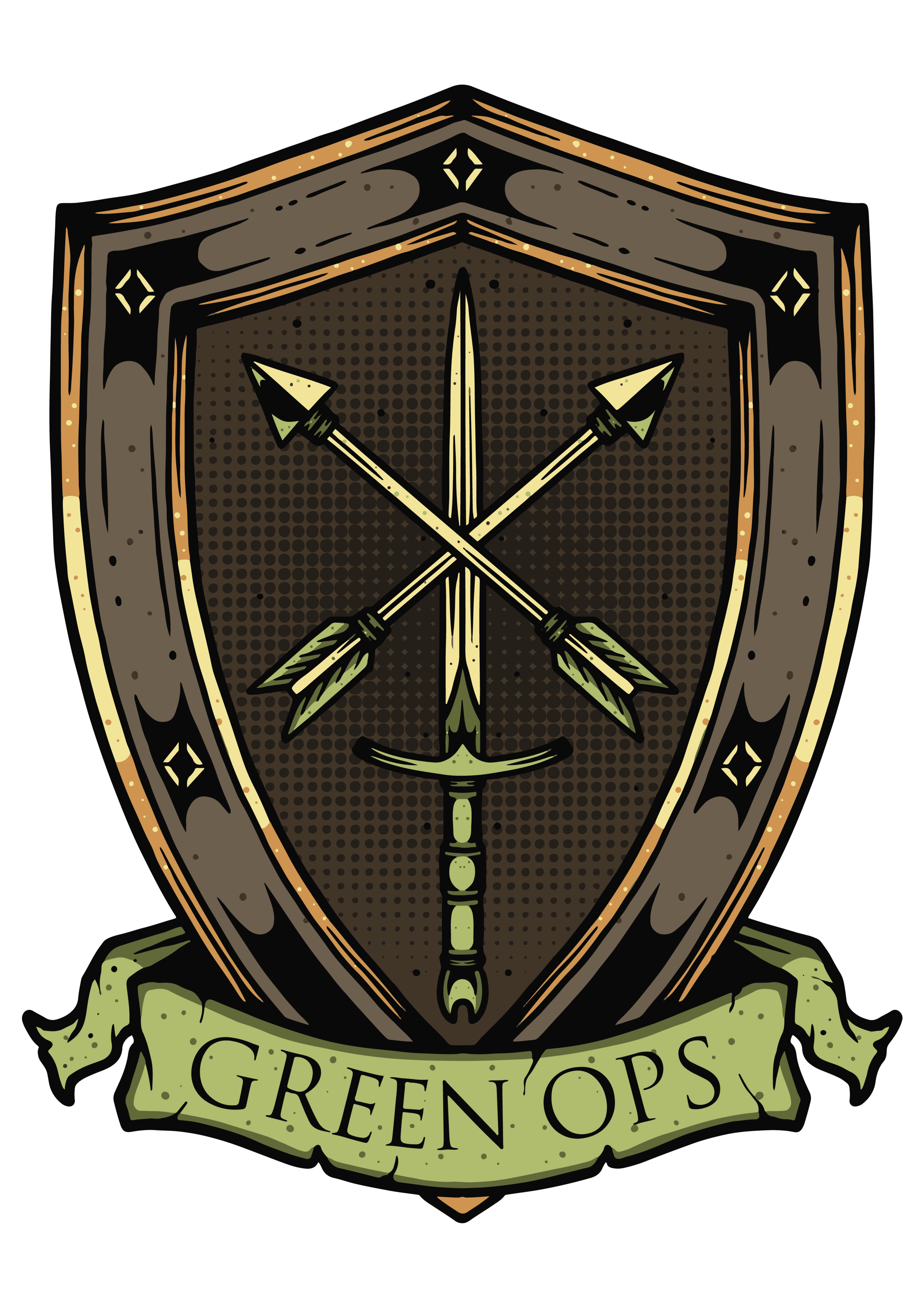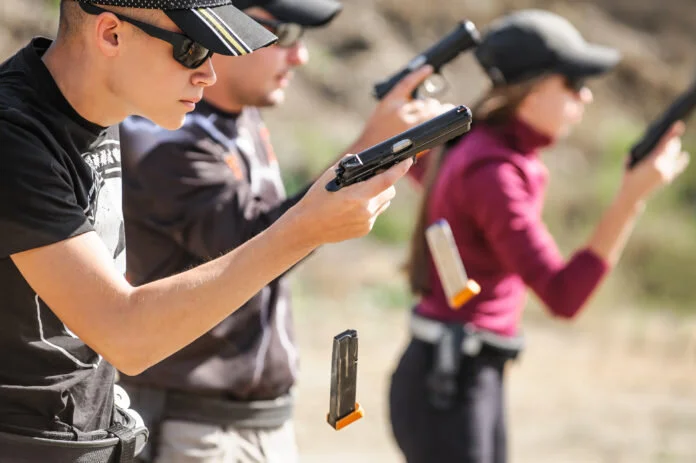Firearms Training: If You Have a Bad Experience, You Gotta Get Back Out There
Article by Mark Houser originally posted at: The Truth About Guns
Most of us have been told that firearms training is important and valuable. Maybe even essential.
But my own early experiences with formal training were…disappointing.
In fact, I found that there was a significant disconnect between the ostensible value of firearms training and what I actually experienced in those classes. I’m sure that’s been the case for many of you. Unfortunately, poor training experiences can dissuade students from seeking training of real value: if your first class was disappointing, another class that’s twice as expensive and twice as far away isn’t going to be very appealing.
That’s a shame. As with any other skill, you won’t reach your full potential as a shooter without quality training.
But, in the realm of firearms instruction, there is a serious quality control problem. The gun community tends to be very hardware-oriented. Pick up any gun magazine and tell me, what’s the ratio of gear content to training content? Probably 10 to 1, or worse. With the relative lack of consideration and scrutiny, it’s no wonder that training of marginal value is pervasive, while quality training can feel elusive.
Part of the reason for the lack of scrutiny is that, however shoddy it might be, the most prevalent forms of firearms training still provide exactly what the market demands: marginal training can fulfill the basic, statutory training requirements for carry permits, certain licenses, and so forth. As a means to that end, low-value training that simply checks the right legal boxes and produces a signed certificate is perfectly adequate.
But what about those of us who actually want to develop our skills to the fullest, those of us who want to be as competent as possible in the event that we need to use a firearm to preserve life? What’s out there for us?
Fortunately, more than you might think. I hope my experience can encourage you and help you to find the instruction you need — even if your personal training journey has had a rocky start.
My Own Rocky Start
In retrospect, I’m embarrassed that I didn’t walk out of my first class when the instructor had students point real pistols at one another as part of an inane presentation drill. (Yes, of course the guns had been assiduously confirmed to be unloaded, but that doesn’t matter — “all guns are always loaded.”)
I understood that it was wrong. Safe handling of firearms had been an integral part of my upbringing. But, at the age of 20, I didn’t have the confidence to tell the instructor — an Iraq War veteran who referenced his military experience repeatedly — that his methods were unacceptable.
That class left me feeling queasy and, frankly, doubting the value of further training, especially training of the sort that was accessible to me — financially, logistically and geographically. Sure, I knew that the legendary Gunsite existed somewhere out west, and I knew that at least some military and law enforcement elements got good training.
But if there was anything of real quality available to a regular guy like me, I wasn’t aware of it.
Over the next several years, I only took about as much formal training as was necessary to procure carry permits for the various places in which I lived and worked. Compared to my first class, nothing so egregious happened in any of these subsequent classes.
However, in terms of knowledge or marksmanship, they didn’t really challenge me or improve me, either. The fact that I practiced regularly and studied on my own made me competent and knowledgeable relative to my classmates and instructors. Thus, it wasn’t even clear to me that I really needed to improve in any significant way.
Paradigm Shift
In early 2019, a friend and I decided we wanted to learn how to run our ARs more capably. The fact that most of my prior formal training had revolved around pistols probably made me more open-minded about giving training another shot — for better or worse, I knew I’d at least be in for something different.
I had seen a flyer for a training company called Green Ops at a local range. I found their website and saw that they ran carbine courses. On a whim, my friend and I booked a private lesson with a Green Ops instructor who turned out to be Joshua Shaw.
From the start of the lesson, it was immediately apparent that this training was unlike any I had taken before.
For example:
Firearms safety rules were taken seriously and observed rigorously. I cannot count how many times I have seen other instructors explain the basic rules of firearms safety and then, moments later, violate those rules or tolerate students’ violations. Those instructors knew the rules in theory, but, in practice, adhered to those rules only approximately. Josh was different. He handled his rifle like a professional — first and foremost, safely — and he expected us to do the same.
We were held to high standards of marksmanship and performance. We spent most of our time shooting at roughly index-card sized targets. For drills at longer ranges or under stricter time constraints, we might be allowed a standard “A-zone” target area. This was a stark contrast to the full- or half-scale silhouettes I usually saw in training. We were expected to call our shots and analyze misses.
This was also the first time I ever saw a shot timer in a training course. We were challenged to maintain our marksmanship under time constraints — and we definitely found our breaking points more than a few times!
Josh demonstrated everything. He didn’t ask us to shoot a drill without first showing us that it could be done faster and more accurately than we could do it ourselves. Again, this differed from other training experiences I have had in which instructors did not demonstrate drills or even chose to use class range time as their own personal range time — shooting what and how they felt like shooting instead of shooting for instructional purposes.
Technical critiques mattered in a way that I hadn’t previously experienced. It’s one thing to be given a technical correction (e.g., “grip your rifle like this”). It’s another thing entirely to be shown how the correct technique is superior. The instructor’s own competence is key here: it’s hard to sell a student on a technical correction if the student can still outshoot the instructor with his “incorrect” technique. The fact that Josh can outshoot me by a wide margin gave his technical critiques a particular weight.
It was an eye-opening experience. During that lesson, I developed a new perspective on my own capabilities and the real value of training.
Courtesy GunMag Training
I discovered that I wasn’t nearly as competent of a shooter as I thought I was or as I wanted to be. Over the next couple of years, I’d go on to find that this sort of ego-check is highly correlated with good training. It’s also one of the reasons people avoid challenging training and competitions: simply put, it feels good to never encounter people or circumstances that make you doubt your abilities.
Being a proverbial “big fish in a small pond,” as I’d been in other classes, is comfortable. However, that’s not a circumstance that motivates anyone toward rigorous self-improvement and skill development. No wonder, then, that my shooting ability had pretty much plateaued at that point.
Fortunately, I also learned that the kind of training that could help me to develop into the kind of shooter that I wanted to be was real, available, and accessible. And while my assessment of my own abilities took a hit, those abilities actually improved markedly over the course of just a few hours of rigorous training. Moreover, that session left me with a much better sense of what I needed to practice on my own time and how to do it.
I’ve been growing as a shooter ever since.
Green Ops and More
Since that first carbine lesson, I’ve trained with Green Ops instructors on three more occasions:
a private pistol training
a private pistol/carbine training
a group carbine training — Defensive Carbine II (Green Ops invited me to this most recent training in exchange for writing about my training experience. The prior Green Ops training was all at my own expense.)
All of those training experiences have been of similar quality to the first. There is a clear, central focus to all of the Green Ops training courses I’ve taken: Execute the fundamentals safely and to a high standard of proficiency regardless of the challenges posed by target size, distance, movement, shooting position, or other factors.
There aren’t any wasted rounds in a Green Ops class, no mindless paper-punching. Every drill challenges students in terms of marksmanship and/or speed, and the outcome of each drill is analyzed. Targets aren’t just “something to shoot at.” They’re tools for measuring performance. Students are held accountable for where on the target their rounds land.
It’s clear at this point that I enthusiastically recommend Green Ops. Currently, they have classes coming up in Virginia, Texas, and Michigan. Green Ops offers classes focused on basic and advanced pistol and carbine handling, combatives, competition skills, LPVO and pistol red dot use, and more. (Personally, I’m excited to build some skill with an unfamiliar platform in their Defensive Kalashnikov class next month.)
In addition, my positive experience with Green Ops also encouraged me to find other high-quality instruction. For example, last year I took an ECQC course with Craig Douglas of Shivworks. It was an excellent class that I probably wouldn’t have sought out or committed to were it not for my positive experience with Green Ops. In that sense, training with Green Ops helped to network me into a community of instructors who are interested in helping students build real competence in life-saving skills.
I want others to start having the positive training experiences that I have had since my first encounter with Green Ops. I encourage you to use resources like Firearms Training Hub and Practically Tactical to both find and vet instructors and training. The general proliferation of quality trainers’ content on social media also makes it easier than ever to find training that suits your needs.
Conclusion
My training journey got off to a rough start. I wouldn’t be surprised if yours did, too.
Don’t be discouraged by the bad experiences. There are some phenomenal instructors and training companies out there. The time, effort, and expense necessary to seek them out and participate in their training is worthwhile.
Get out there and train.
Mark Houser is an independent researcher who writes about the right to bear arms and firearm policy.
This article was originally published at marklivesthings.medium.com and is reprinted here with permission.



